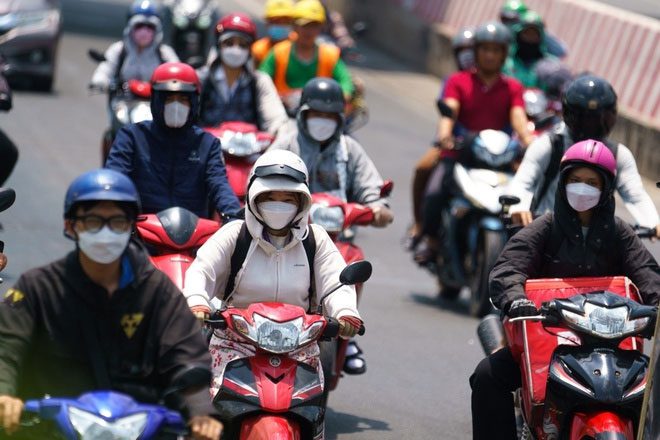Heatwaves are the deadliest weather phenomenon, creating hazardous outdoor conditions for extended periods.
A heatwave is defined as a period of abnormally high temperatures compared to the expected temperature for a specific region at a given time of year, according to the Met Office, the United Kingdom’s Meteorological Agency. Heatwaves can last from several days to weeks and are one of the leading causes of weather-related fatalities, affecting both developed and developing countries.

Heatwaves are prolonged hot weather phenomena, posing particular dangers to those who must work outdoors. (Photo: Thuy Trang).
Each meteorological agency has different criteria for recording heatwaves, but the common factor is abnormal high temperatures. The World Meteorological Organization classifies a heatwave as at least 5 consecutive days with maximum temperatures exceeding the average maximum by 5 degrees Celsius.
The Met Office identifies a heatwave when the temperature in a region exceeds its average threshold for 3 consecutive days, while the National Weather Service (NWS) in the United States recognizes heatwaves when “an unusual hot and humid spell” lasts for 2 days or more.
Some of the deadliest heatwaves on record include the one in Russia in 2010, where abnormally high temperatures covered over a million square kilometers and resulted in 55,000 deaths. More recently, a heatwave in India in 2015 led to the deaths of over 2,500 people.

Heat can cause dehydration, exhaustion, and heat stroke in individuals exposed to high temperatures for prolonged periods. (Photo: Chi Hung, Anh Nhan).
“Such heatwaves may seem less dramatic compared to other natural disasters like tornadoes, hurricanes, or floods, but they kill more people in the U.S. than all other weather-related disasters combined,” warns the National Oceanic and Atmospheric Administration (NOAA).
Heatwaves occur when air becomes trapped in a region, rather than circulating around the globe, leading to heat accumulation and rising temperatures, according to NOAA.
The culprit behind this phenomenon is high-pressure systems aloft, which push air down and prevent air close to the ground from rising. Heatwaves become increasingly dangerous over time as this “sinking” air acts like a lid, keeping warm air close to the ground, and without rising air, there is no rain to cool the air.
Climate change is causing heatwaves to occur more frequently, according to studies by the Met Office. As greenhouse gas concentrations increase, record-breaking heatwaves could occur annually by the 2050s.
During heatwaves, people are advised to wear lightweight, light-colored clothing and to avoid strenuous outdoor activities, according to NOAA. Additionally, it is recommended to drink plenty of water and to avoid high-protein and meat-heavy foods, as these can increase the body’s heat production.
The agency also warns that one of the most dangerous environments during a heatwave is inside a car, as it is an enclosed space that heats up quickly; one should not sit in a car with the windows closed.


















































